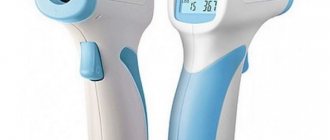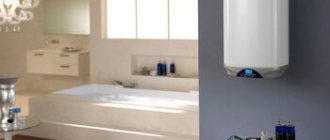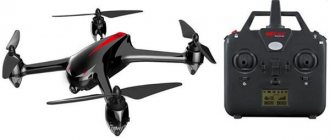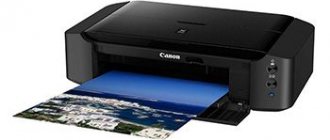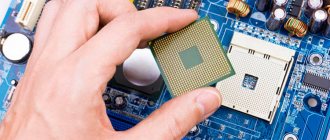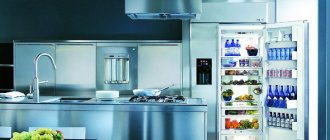A personal breathalyzer is a good assistant for self-monitoring, and will allow the responsible owner not to drive while there is still alcohol vapor in the exhaled air.
Having your own breathalyzer is an ideal way to avoid drunk driving charges. Simply blow into the device and you will know whether you are ready to travel or whether it is better to call a taxi.
In the language of professionals, a breathalyzer is called an analyzer for the concentration of ethanol vapor in exhaled air. Here's what you should pay attention to when choosing a device:
- the ability to switch the display from mg/l to ppm and vice versa;
- presence of regular batteries and power supply;
- the ability to replace the funnel with a mouthpiece from the kit.
Types of breathalyzers
Let us note right away: if a breathalyzer, no matter how much it costs, is not certified as a medical device and is not approved as a measurement tool, its readings have the same force for the court and the traffic police as “measurements” with comic applications on a smartphone. Therefore, breathalyzers for personal use that do not have certification can only be used as a safety net before leaving, but certainly not used in disputes.
With semiconductor sensors . The smallest group. The sensor itself is a porous substance. When a person blows air through it, it absorbs alcohol molecules. The volume of the sensor changes, and the degree of intoxication is determined. The main disadvantage of such breathalyzers is that the sensors absorb not only alcohol molecules, but also other substances that are similar in structure.
With electrochemical sensors . Very common. They work quickly, are selective towards ethanol and are almost independent of the ambient temperature. Inside is an electrochemical cell with platinum electrodes, which determine the amount of exhaled ethanol.
With infrared sensors . They have high measurement accuracy. Absorb IR radiation from ethyl alcohol vapor. Such devices have absolute selectivity to ethanol, but the readings are highly dependent on environmental parameters. The disadvantages include the long analysis time
Therefore, the best choice is a breathalyzer with an electrochemical sensor . Such sensors have a long service life (the catalyst in the measuring cell is not consumed over time), and the selectivity is high; they have good accuracy without the need for particularly frequent calibrations. Such sensors are now used both in certified equipment and in fairly affordable household models.
What to look for when choosing
It's time to figure out how to choose a breathalyzer for personal use. We recommend paying attention to the following characteristics:
- The preparation time for the device - the shorter it is, the faster the check will be.
- Response time - how quickly the device produces results.
- Measuring range.
- Allowable error.
- Operating temperature - this indicator is especially important for residents of northern regions.
- The number of tests per battery charge varies from 200 to 500 for different models.
- warranty .
- Blowing method – with/without mouthpiece.
- indicator .
- Availability of and self-cleaning systems
The main 4 parameters that people focus on in order to buy the right device: purpose, frequency of use, cost and degree of difficulty of maintenance.
Purpose
There are professional and personal models of analyzers. Certified models are purchased for enterprises. The information obtained on these devices is official evidence of the presence or absence of alcohol intoxication in a person. Professional type devices are also called breathalyzers.
Most personal devices are not certified. The measurement error is significantly greater than that of professional-grade devices. This device is only suitable for personal control.
Frequency of application
If the model is cheap, then experts recommend using it 1-2 times a week. At the same time, a professional device can easily withstand hundreds of samples throughout the day.
Price category
The accuracy of measurement and the cost of the device are directly proportional. It is advisable to buy products from well-known manufacturing companies. It costs more, but reliability is guaranteed. This is much more reliable than low-quality Chinese no name fakes.
Service maintenance
Even with a long working life, the sensor of the measuring device fails. Therefore, it is important to know whether there is a service center in your (or nearest) city that will allow you to replace the sensor. You should also consider the possibility of ordering components through the online store.
In addition, the following factors influence the choice:
- type of sensor. Professional models are usually equipped with electrochemical and spectrophotochemical sensitive elements. Personal class modifications are most often equipped with semiconductor sensors;
- air intake method. It can be carried out using a mouthpiece or without contact. Contact devices are more expensive, but they are more accurate;
- additional functionality. The breathalyzer may include a number of useful options: clock, thermometer, alarm clock, flashlight, stopwatch;
- units and measurement range. Devices that display information in various units of measurement (mg/l, %VAC, ppm) are convenient. As a rule, the device displays ethanol concentration from 0 to 5 mg/l;
- sizes, design. There can be no clear recipe here. It all depends on individual preferences.
Inexpensive breathalyzers
The cost of breathalyzers is influenced by a number of factors. The main ones are: sensor type, quality of materials and intended service life. Devices with a semiconductor sensor cost an order of magnitude less than devices with an electrochemical version. Inexpensive devices are usually designed for a small number of measurements per day and are intended for personal use.
Delta AT-300
Personal breathalyzer Delta AT-300. The device has compact dimensions of 10.3 by 6.5 and 2.7 cm, made of black plastic. Operates on three AAA batteries. By design, the model has a mouthpiece with five replaceable silicone tips included. The blood alcohol level measurement range is from 0 to 1.99 ppm. Operating the device is simple and intuitive. The testing process is started using a button on the case. The warm-up time will take up to 20 seconds, the blowing duration will be 5-9 seconds and the result delivery time will be up to 5 seconds. When you press the same button, the device recalculates the result into different units (mg/l in air or ppm in blood). The advantages of the model include an LCD display with a clearly visible indication. Additionally, there is a blue backlight for use in the dark. There is a sound indication. It is worth noting the practical operating temperature range from -10 to +50 °C. Users note the reliability of the device, the readings of which are accurate enough for personal testing. The product is small-sized and lightweight, easy to use.
Advantages
- Effective personal testing
- Result in two units of measurement
- Informative display
- Display with blue backlight and large numbers
- Operating temperature range
- Replaceable mouthpiece covers
- Compact dimensions, design
Flaws
- Results for self-control only
- No batteries included
- Loud, harsh sound
Inspector AT100
The manufacturer specializes in the production of automotive gadgets, paying special attention to the balance of quality, functionality and cost of its products. The AT 100 breathalyzer is equipped with a semiconductor sensor with the ability to measure blood alcohol from 0 to 4 ppm, with an error of 0.1. Air intake is carried out using a mouthpiece, which eliminates the influence of external conditions on the result. It takes up to 20 seconds to prepare the device for operation, the measurement time is 5 seconds, at a temperature of 10 - 40°C above zero. Information with the result is transmitted to a 2-digit LED screen and is accompanied by a sound signal. The device runs on one AAA battery, which is included. Accurate operation of the device is ensured by additional functions such as exhalation control, self-diagnosis and self-cleaning of the sensor. Users note the ergonomic design of the model (breathalyzer-keychain), compact dimensions of 6.2 by 3.7 and 1.5 cm, and quality of workmanship. A good service life of the device before calibration is considered to be 12 months or 300 measurements.
Advantages
- Price-quality ratio
- Measuring range
- Fast measurement process, accuracy
- Economical battery consumption
- Exhalation control, self-diagnosis and self-cleaning functions
- Design, compact size
- 3 mouthpieces and battery included
Flaws
- Use for self-monitoring only
- 2 digit display
- Operates from +10 °C
Ritmix RAT-310
Compact semiconductor breathalyzer for personal use. The keychain model with a durable body runs on two AAA batteries and is equipped with five replaceable mouthpieces. Equipped with a visual indication, prompts for the further algorithm of actions necessary for the user appear on the screen. The display backlight makes using the device convenient in poor lighting. Measurement range from 0 to 1.9 ppm, with a measurement step of 0.1. It takes only 10 seconds to prepare for measurement and give readings. The measurement error does not exceed 10%, this is a good indicator for personal devices. The device is capable of operating at temperatures from +5 to +40 degrees. According to user reviews, it has proven to be reliable and corresponds to the intended period of use.
Advantages
- Compact
- Comfortable
- Heats up quickly and gives results
- Accurate
- Easy to use
- Replacement mouthpieces included
- Price
Flaws
- No batteries included
- Self-control only
KOTO BAT001
Compact device KOTO BAT001, which determines the amount of alcohol in the blood in 5 seconds. The device has a two-color indication and a sound signal; the power supply is enough for 300 measurements.
Advantages
- compact
- autonomous operation
- fast measurement result
- Replacement mouthpieces included
Flaws
not intended for use at low temperatures
Alco Stop AT 109
Semiconductor breathalyzer that measures up to 1.9 ppm. Functional - the first measurement can be taken in 20 seconds. Battery operated.
Advantages
- auto shutdown
- sound indication
- low battery indicator
- compact dimensions
Flaws
- blowing without a mouthpiece
- error up to 10%
No. 7 – Delta AT-300
Price: 1,600 rubles
For how much the Delta AT-300 costs, there is a good error rate - only 5%. Also, its strength is its speed - it takes 20 seconds to prepare, the blowing time is 5 seconds. Thus, the model should be recommended to those who want to determine the level of ethanol vapor in exhaled air in the shortest possible period of time. The breathalyzer has a sound indication that allows you to use it even at night.
It is noteworthy that the device can easily withstand operation at temperatures not lower than -50 degrees, so it can be used in the harsh Russian winter. A set of mouthpieces is included. The disadvantage is the small display with low brightness.
Delta AT-300
Decoding the device readings
Promille (‰) is a thousandth of a percent. This unit is used in laboratories to determine the degree of intoxication.
A few simple examples will help you understand what your device shows:
- 0.5 liters of vodka contain 200 ml of pure alcohol, which corresponds to 2.5 ‰ in a man’s body; a bottle of beer, a quarter liter, will show 0.16‰ on the measuring device;
- a drink with a strength of up to 12% with a volume of 0.7 l will show 0.12‰.
How many ppm of alcohol is legal for drivers in 2021?
The answer to the question of how much ppm of alcohol is permissible for drivers in 2021 lies in the law, which came into force in 2013 and introduced permissible levels of 0.16‰ when exhaled or 0.3‰ in the blood.
How long will it take for a breathalyzer to not show alcohol?
No less important is the question of how long the breathalyzer will not show alcohol. Due to the fact that alcohol does not disappear for a long time, it is advisable for motorists to know the time frame for removing alcohol from the body.
The table shows the approximate periods of elimination of 200 grams of alcohol:
| Alcohol/person's weight | 60 kg | 90kg |
| Beer 6% | 2 hours 37 minutes | 1 hour 34 minutes |
| Champagne 11% | 4 hours 47 minutes | 2 hours 52 minutes |
| Liqueur 30% | 13 h 03 min | 7 hours 50 minutes |
| Vodka 40% | 17 hours 24 minutes | 10 hours 26 minutes |
Vote
Which breathalyzer did you choose?
Drivesafe II
12.50 % ( 1 )
Dingo AT-2000
12.50 % ( 1 )
AlcoHunter Professional X
12.50 % ( 1 )
Inspector AT350
12.50 % ( 1 )
Dingo E010
12.50 % ( 1 )
AlcoSafe KX-8000s
0.00 % ( 0 )
Inspector AT550
12.50 % ( 1 )
SITITEK PRO2
0.00 % ( 0 )
AlcoHunter Economy
0.00 % ( 0 )
AT 6000
25.00 % ( 2 )


